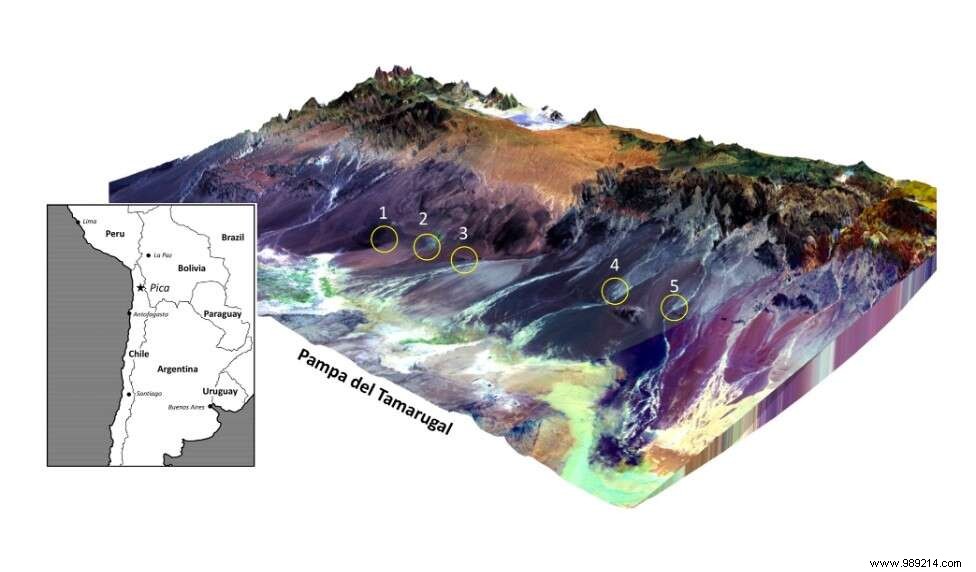According to a recent study, mysterious pieces of twisted glass strewn across the Atacama Desert in Chile may have been "shaped" by a comet exploding in the Earth's atmosphere about 12,000 years ago.
For the past decade, geologists have wondered about the origin of a vast corridor about 75 kilometers long filled with shards of black and green glass dark in the Atacama Desert (Chile). These shards, some of which can reach fifty centimeters in length, also twist into several shapes. How to explain such a phenomenon?
Some time ago, a group concluded that these pieces of glass were the result of intense Pleistocene fires (at the time, the region was not as desert). In the journal Geology, a team today suggests that the intense heat and winds produced by an ancient comet's explosion in Earth's atmosphere may have turned sand into silicate glass.
To arrive at this hypothesis, the researchers performed a chemical analysis of dozens of samples. Inside the glass, they isolated minerals called zirconia, some of which had broken down into baddeleyite, a rare zirconium oxide mineral. This "transformation" usually occurs at temperatures above 1670°C , in other words, at temperatures warmer than those recorded in wildfires, according to the press release.
During these analyses, the researchers also isolated minerals that had previously only been found in space rocks. Some, such as cubanite and troilite, were similar to those found in samples from Comet Wild 2 collected by NASA's Stardust mission.

Finally, scientists suggest that "winds" produced by the explosion of such a rock in the atmosphere, just above the surface, could explain the shapes strange and twisted of these samples. “To have such a dramatic effect over such a large area, it was a really massive explosion “, according to Pete Schultz of Brown University. “Many of us have seen fireballs streaking across the sky, but they are nothing compared to what this one would have been “.
Researchers suggest the explosion happened about 12,000 years ago . "Coincidence or not:this event would have happened around the same time that we think the megafauna disappeared, which is intriguing “, continues the researcher. “It is also possible that the first inhabitants, who had just arrived in the area, could have witnessed the event. It would have been quite a show “.
Further studies could refine this estimate and determine the size of the comet.